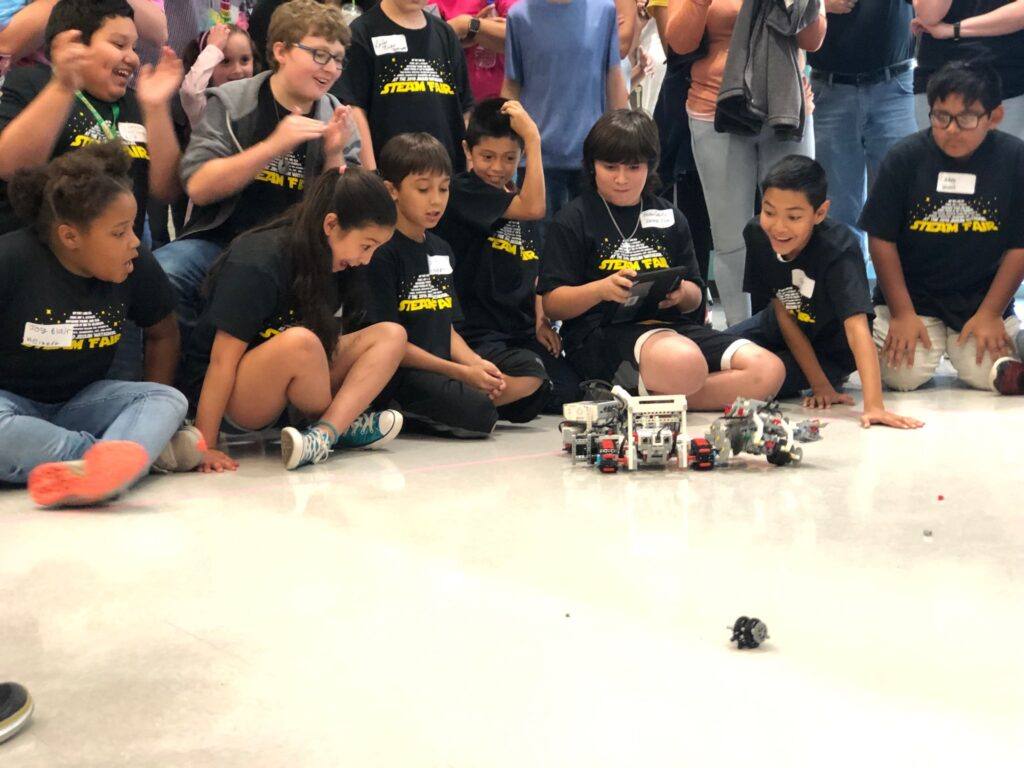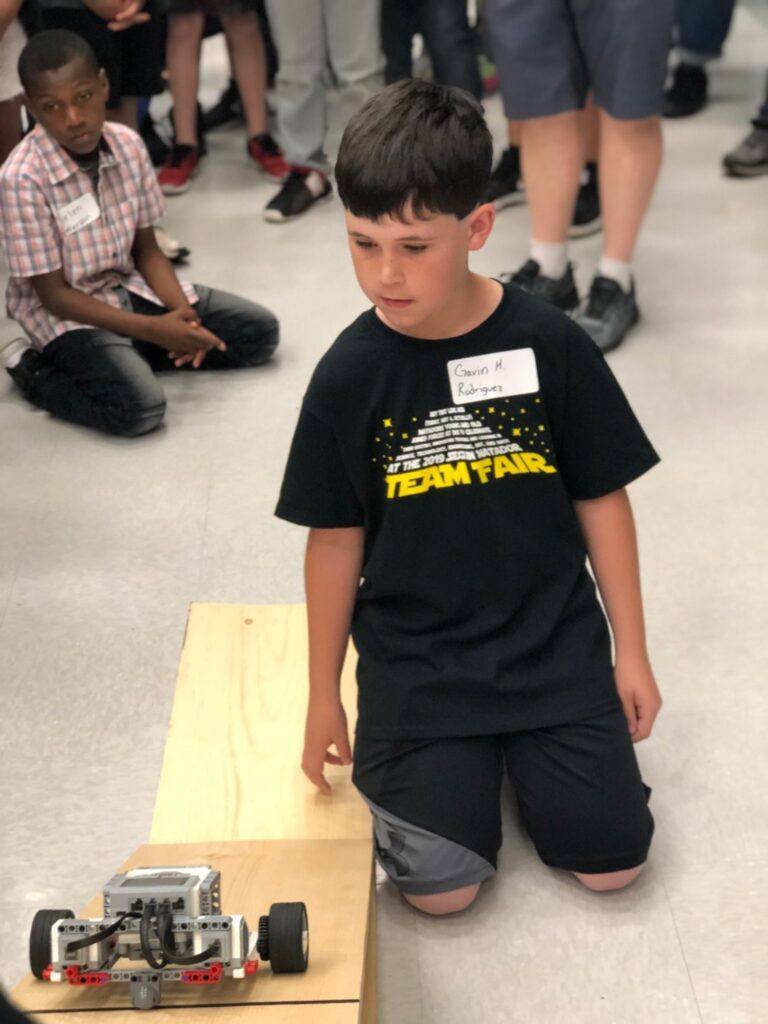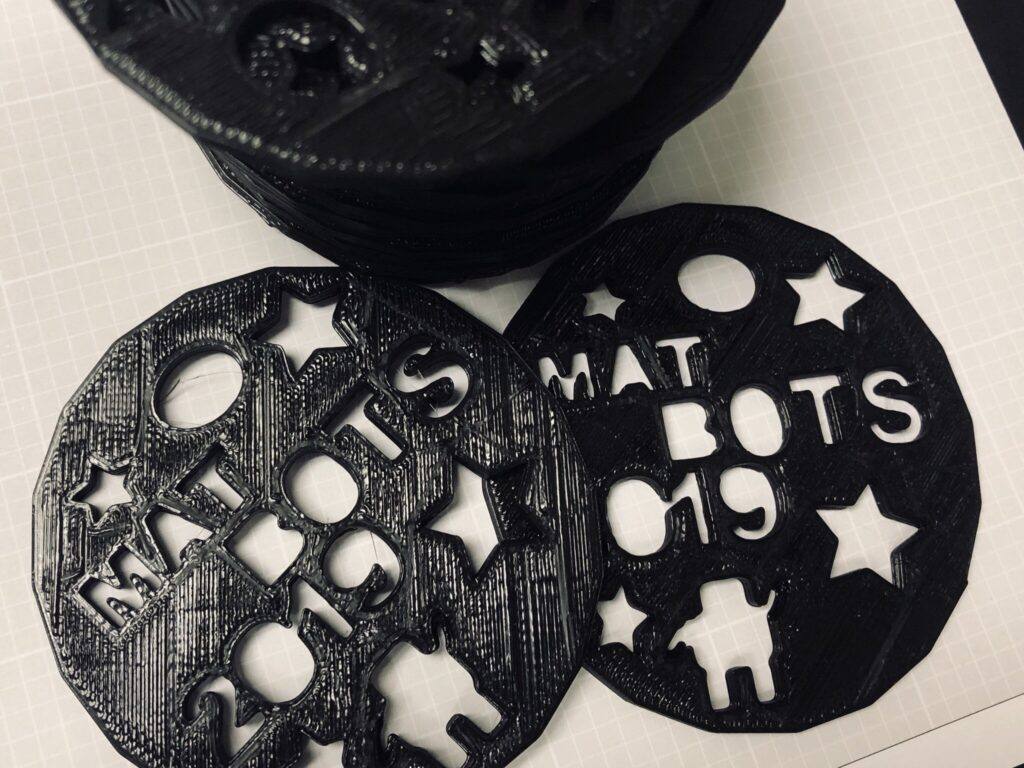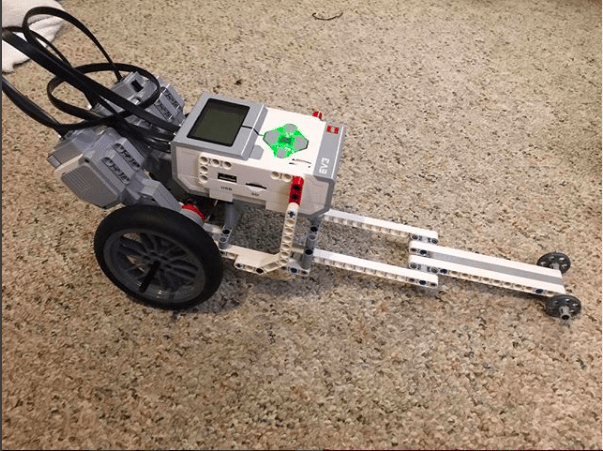Hey, robotics teachers and coaches, are you looking for a challenge or two for the spring semester? Or perhaps you want to end the 2019-2020 year with a campus or district-wide robotics contest? Well, I have a solution for you from Randy Rodgers. Randy is the Director of Digital Learning Services at Seguin ISD and he has graciously shared his district-wide robotics competition below.
Take It Away, Randy
During our annual STEAM Fair this past spring (2019), Seguin ISD held a district-wide robotics competition. We have after-school clubs at each elementary and middle school campus and robotics classes at our middle schools. We try to emphasize the basics first, advancing to more complex, open-ended challenges as the year goes on, and the contest was a great way to let students show off what they had learned.
The event gave students chances to engage in creative problem-solving, engineering and design, application of scientific principles, and numerous opportunities to “fail productively.” This year’s competition featured four contests which are described in detail below.
Battlebots
Teams will build robots that will attempt to be the last robot in the combat arena.

Game Setup:
- Combat Arena will by 8’ x 8’ with boundaries marked with tape.
- Robots can only use standard Lego robot components, either EV3 or NXT.
- Robots can be controlled by Bluetooth via cellphone, iPad, or other wireless device.
- Robot must fit in a 12’x12’x12’ cube at the beginning of each round.
Game Play:
- Robots will compete in at least two rounds against up to three other robots (or more).
- A round will be over when only one robot remains inside the arena, or when only one robot in the arena is still mobile and functioning.
- A robot is deemed out of the arena if all wheels/tracks are outside the marked boundaries. If a wheel/track is touching any part of the boundary line, it is still in.
- During a round, students may not repair or touch a robot. Doing so will automatically disqualify the team’s robot from the round.
Drag Race
Teams will race head-to-head to determine the fastest robot dragster.
Game Setup:
- Robot dragsters can only use standard Lego robot components or custom created, 3D printed parts (limit $5).
- Robots may be autonomous or Bluetooth controlled.
- The race track will be 20’-25’ in length, with each lane 4’-5’ wide. Dragsters that leave their assigned lane will forfeit that round. Should both robots leave their assigned lanes, the robot that traveled farthest in their lane will be the winner. In the final, there would be a re-run until a winner successfully crosses the finish line.
Game Play:
- Robots will race at least twice. Robots will be randomly drawn to determine head-to-head matchups for rounds 1 and 2. In the case of an odd number of robots in a round, one team will be credited with an uncontested victory. At the end of rounds 1 and 2, any teams with two defeats will be eliminated.
- Dragsters not eliminated will be randomly drawn to determine head-to-head matchups for rounds 3 and 4. At the end of rounds 3 and 4, any teams with two defeats will be eliminated. Remaining teams will compete in a single-elimination final, with pairings determined by random drawing.
Robotics Ramp Climb
Teams will build robots designed to climb the steepest ramp possible.

Game Setup:
- Ramps will be 4’ long, smooth pine.
- Robots may include non-Lego components not to exceed $5. Any non-Lego components must be listed on a bill of materials, which should list the item’s name, the quantity used, and the total cost.
Game Play:
- The contest will be progressive and double elimination.
- The first round will start with the ramp at a 30º angle and increase by 5º each round thereafter.
- The robot must make it past the 30” finish line on-ramp within 30 seconds.
- The robot will be eliminated after its second failed attempt at any height.
Scorpion Pit
Teams will build a robotic scorpion that will attempt to pop as many balloons as possible in a one-minute time period.
Game Setup:
- Scorpions must be constructed entirely from official LEGO robotics parts with the single exception of a straight pin or similar sharp object to pop the balloons.
- While teams can use the official scorpion build from LEGO, they are not required to do so. Teams may create an original build. Scorpions MUST, however, utilize a downward swinging mechanism/arm or pincer mechanism to pop balloons. They cannot simply attach a front-facing pin to the robot and drive into balloons.
- Robots will use Bluetooth controls.
- Game arena will be a 15’ x 15’ square.
- 20 inflated balloons, 10 each of two different colors, will be in the game arena.
Game Play:
- Scorpion robots will have one minute to pop as many balloons as they can.
- Balloons that are knocked out of the competition arena may not be returned to the arena during the current team’s round. It matters not which team knocked out the balloon.
- Each team will compete once per round for two rounds.
- Teams earn five points for each of their team’s balloons that are popped at the end of the round. Bonus: 10 points will be awarded for popping an extra, specially-colored balloon (e.g. gold).
- The highest total score wins.
Summing Up the Robotics Event
Winning teams were awarded student-designed, 3D printed medals.

Overall, the event was very successful. Students were engaged and VERY excited (as were their parents!). One change for next year’s event will be the Scorpion Pit, based upon a video I saw of a Japanese competition. Rather than trying to pop loose balloons, each robot will have a balloon attached to it and teams will try to pop the opponents’ balloons. Design principles and rules will essentially be the same.
A BIG THANK YOU to Randy Rodgers for sharing four amazing robot challenges! Go Bot Go Go!
Featured Image of EV3 Dragster by Aaron Maurer

